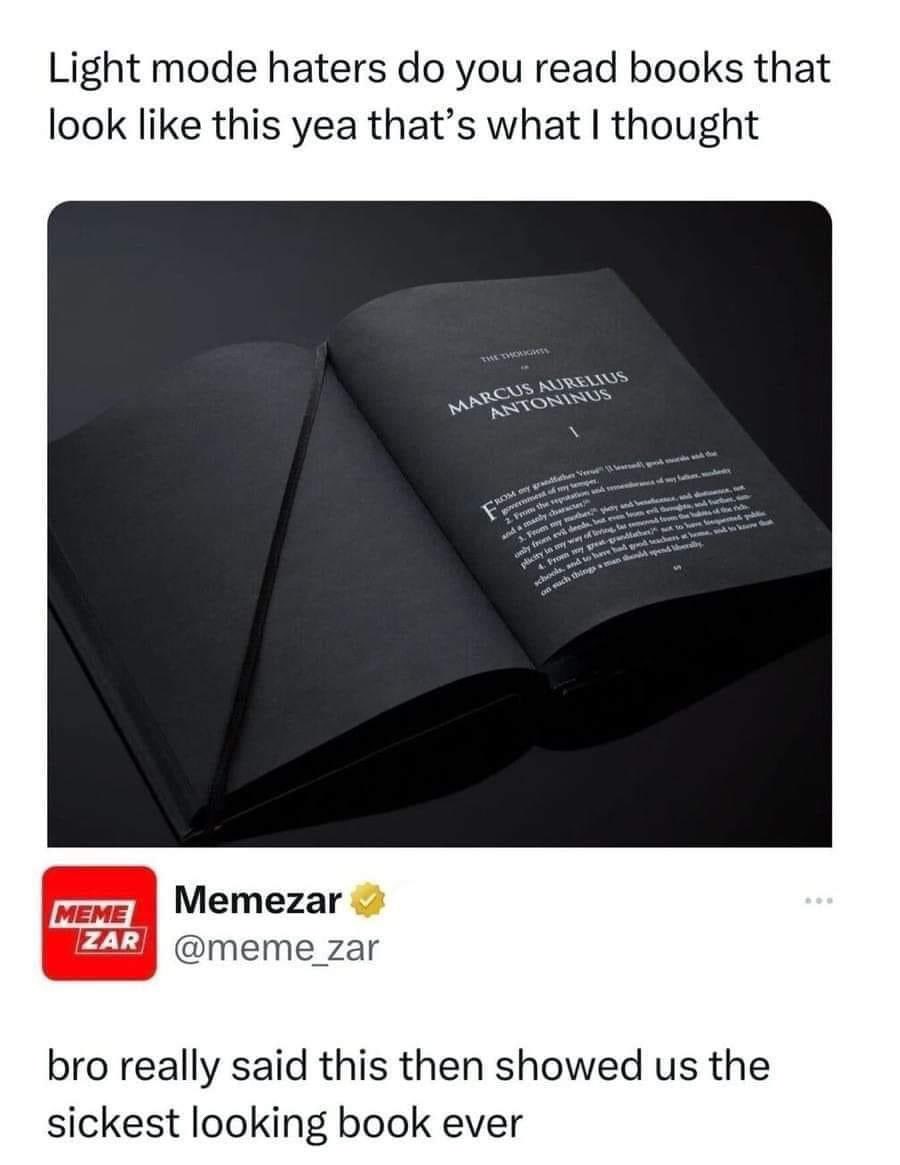this post was submitted on 16 Nov 2023
1931 points (99.0% liked)
Funny: Home of the Haha
6167 readers
229 users here now
Welcome to /c/funny, a place for all your humorous and amusing content.
Looking for mods! Send an application to Stamets!
Our Rules:
-
Keep it civil. We're all people here. Be respectful to one another.
-
No sexism, racism, homophobia, transphobia or any other flavor of bigotry. I should not need to explain this one.
-
Try not to repost anything posted within the past month. Beyond that, go for it. Not everyone is on every site all the time.
Other Communities:
-
/c/[email protected] - Star Trek chat, memes and shitposts
-
/c/[email protected] - General memes
founded 2 years ago
MODERATORS
you are viewing a single comment's thread
view the rest of the comments
view the rest of the comments

Bleaching is to mainly remove tannins, to make the paper white, and to stay white over time. It also makes the paper better able to absorb and retain ink. You don't need any of those properties if you're printing in white, because you can't use absorbent type ink in something like this, it won't show well. You could dye in lieu of bleaching (and this might be cheaper actually).
Printing the text is the challenge. The ink has to be on the paper instead of in the paper... The methods required to do that and come up with a quality product have existed for a very long time, but they'd be methods used to create high end things like wedding invitations and greeting cards and not bulk products like books. I believe the first tech that could do this economically at scale was the photocopier (maybe mimeograph?), which basically melts plastic onto the surface, and could apply clear white text onto black paper as easily as black on white.
I would imagine though, that the tech that could do this in the most economically viable way, would be to ablate the text in with lasers, similar to thermal printing. That would actually reduce the consumables used, maybe even by a lot. likely would overall entail much less hazardous/caustic consumables too... Dark mode printing could possibly be incredibly "green" :)